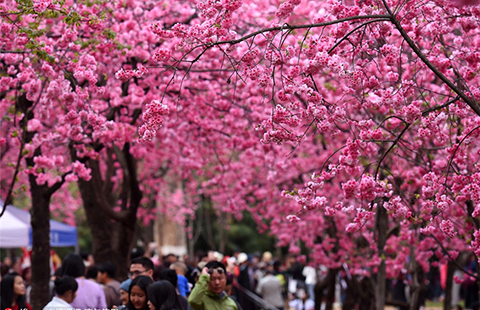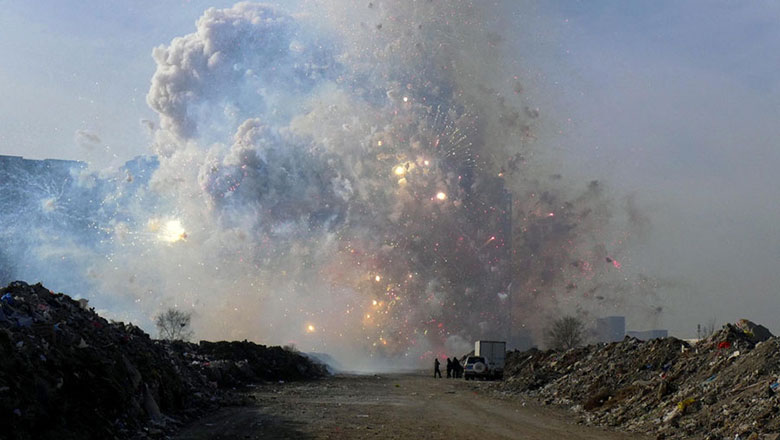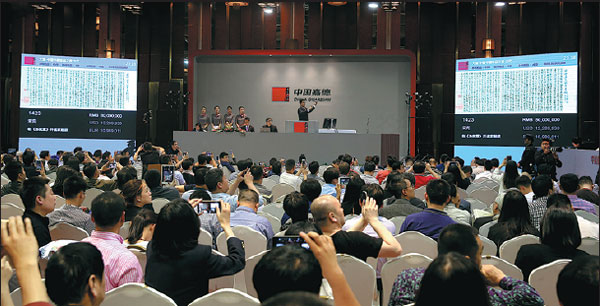Classical art market growing
Updated: 2016-06-09 07:43
By Lin Qi(China Daily)
|
||||||||
The Grand View sale of old Chinese artworks made 667 million yuan, exceeding the modern art total for the first time since the sale's launch. Lin Qi reports.
|
The Grand View sale of Chinese painting and calligraphy on May 15 generates several high prices, including 92 million yuan for Ming Dynasty calligrapher Song Ke's album. Provided To China Daily |
On May 15, the Grand View night sale of Chinese paintings and calligraphy, staged twice a year by Beijing-based China Guardian Auctions, saw a packed salesroom. So those who arrived late had to stand in the back. When the first part of the sales event - comprising modern works - ended, many walked out of the room, leaving dozens of empty seats.
But that meant the most exciting part of the auction was just about to get started.
The second section, comprising classical works, typically referring to pieces produced during and before the Qing Dynasty (1644-1911), generated three big transactions that night.
Jushi Tie, a letter by Song Dynasty (960-1279) politician Zeng Gong, grossed 207 million yuan ($31 million); a calligraphy album in caoshu (a running script) by Ming Dynasty (1368-1644) calligrapher Song Ke sold for 92 million yuan and an album of calligraphed Buddhist sutras, poems and paintings by Tang Dynasty (AD 618-907) and later scholars fetched 57.5 million yuan.
In the classical art section - where 15 of the total of 45 pieces remained unsold - the total takings were 667 million yuan, exceeding the modern art takings for the first time since the Grand View sale was launched in 2011.
The results of the Grand View sale reinforce the impression that the market for classical Chinese art, which has been stable over the past decade, is growing.
The classical Chinese art market is becoming bigger slowly even as other categories, including contemporary art and modern Chinese paintings and ceramics that used to produce record prices in the boom years around 2008, have continued to slide.
This is because of sluggishness in the Chinese art market since 2014 as the country's economy cools, driving away buyers looking for quick profits.
- Suspected IS terrorists arrested in Germany
- Japanese boy abandoned by parents in Hokkaido forest found alive
- China to build Africa's biggest university library
- 'Kill list' found in UCLA campus shooter's residence: Police
- Swiss declare Alps tamed as Gotthard rail tunnel opens
- China urges Japan to properly settle Chinese forced laborers issue

 Euro powers land in France for UEFA EURO 2016
Euro powers land in France for UEFA EURO 2016
 The most unusualgaokao candidates in 2016
The most unusualgaokao candidates in 2016
 Elderly man carries on 1000-year old dragon boat craft
Elderly man carries on 1000-year old dragon boat craft
 Row your dragon boat, cute pandas in Yunnan!
Row your dragon boat, cute pandas in Yunnan!
 In pics: China's college entrance exam starts
In pics: China's college entrance exam starts
 Popular foods to break fast during holy month of Ramadan
Popular foods to break fast during holy month of Ramadan
 Top 10 biggest brands in Asia listed in media report
Top 10 biggest brands in Asia listed in media report
 Things you need to know about China's gaokao
Things you need to know about China's gaokao
Most Viewed
Editor's Picks

|

|

|

|

|

|
Today's Top News
Abe's blame game reveals his policies failing to get results
Ending wildlife trafficking must be policy priority in Asia
Effects of supply-side reform take time to be seen
Chinese State Councilor Yang Jiechi to meet Kerry
Chinese stocks surge on back of MSCI rumors
Liang avoids jail in shooting death
China's finance minister addresses ratings downgrade
Duke alumni visit Chinese Embassy
US Weekly

|

|










